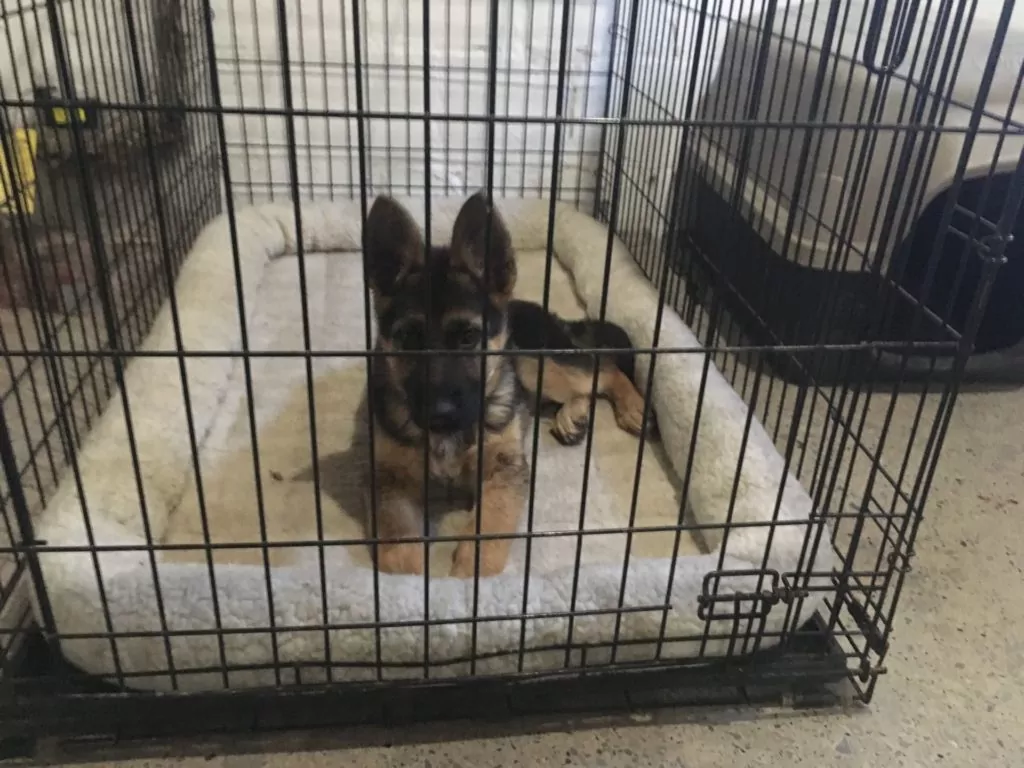
Crating is one of those aspects of living with dogs that unfortunately continues to be polemical and misunderstood at best. Too many in the dog training community, including experts with solid knowledge and hearts in the right place, disparage crating and with unfortunate consequences paid by the dogs themselves.
Such crating critics think that crates are responsible for the many problems experienced by dogs. I know without a doubt that it is the lack of foundations provided by sensible crating that is to blame for many of the behavioral issues seen these days. Countless times, I’ve witnessed the benefits of crating dogs consciously and correctly, as part of a larger plan to impart lifelong foundations of stability, maturity, and bond.
Because of this belief that crating is ultimately painful for dogs, that it represents “jail” and a lack of freedom and agency, crate training is recommended for dogs to gradually like their crate and get “trained” using it.
One common setup is the dog being given a large room or exercise pen with a tiny crate available for the dog to go in as they please. Whether dealing with a new puppy, a newly acquired or rehomed dog, or a freshly adopted rescue, that animal’s need is not for choice, it is for structure, safety, and knowing we will set them up to succeed. The dogs are given choice, however minimal, that they do not want or need at that juncture.
When I bring a new dog home, board a client dog, or foster a rescue dog, I set the dogs up in a very large crate. I usually go one size, if not more, over the breed-recommended crate size. Many people have their crates in the middle of all the action – their living room, kitchen or bedroom. I place crates in semi-private locations – hallways, laundry rooms, dens, offices, basements, guest bedrooms etc. Instead of presenting the dog with the crate as a choice, I simply crate the dogs. They operate according to a predetermined schedule that includes crating along with opportunities for exercise, training, and socialization. Dogs in Foundations are crated for a significant amount of time precisely so they can practice freedom in increments, successfully working their way towards a lifetime of living freely. With time and maturity, a dog will not only desire freedom and choice but will also be worthy of it. The Way of Life method ultimately works towards a dog’s freedom, and we are successful in that mission because we do things in stages.